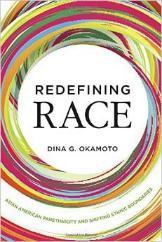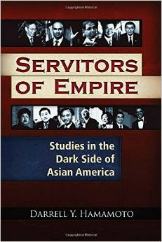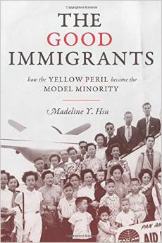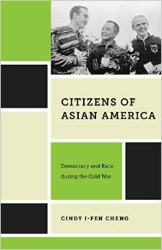May 26, 2015
Written by C.N.
New Books: Educational Success and the Model Minority Image
As a follow up to my recent post titled “The Affirmative Action Debate Among Asian Americans,” these recently-published books provide some more details and sociological context regarding Asian American academic and socioeconomic success, as well as how these achievements affect their position in the larger U.S. racial landscape.
The Color of Success: Asian Americans and the Origins of the Model Minority, by Ellen D. Wu (Princeton University Press)

The Color of Success tells of the astonishing transformation of Asians in the United States from the “yellow peril” to “model minorities” — peoples distinct from the white majority but lauded as well-assimilated, upwardly mobile, and exemplars of traditional family values — in the middle decades of the twentieth century. As Ellen Wu shows, liberals argued for the acceptance of these immigrant communities into the national fold, charging that the failure of America to live in accordance with its democratic ideals endangered the country’s aspirations to world leadership.
Weaving together myriad perspectives, Wu provides an unprecedented view of racial reform and the contradictions of national belonging in the civil rights era. She highlights the contests for power and authority within Japanese and Chinese America alongside the designs of those external to these populations, including government officials, social scientists, journalists, and others. And she demonstrates that the invention of the model minority took place in multiple arenas, such as battles over zoot suiters leaving wartime internment camps, the juvenile delinquency panic of the 1950s, Hawaii statehood, and the African American freedom movement. Together, these illuminate the impact of foreign relations on the domestic racial order and how the nation accepted Asians as legitimate citizens while continuing to perceive them as indelible outsiders.
By charting the emergence of the model minority stereotype, The Color of Success reveals that this far-reaching, politically charged process continues to have profound implications for how Americans understand race, opportunity, and nationhood.
Redefining Race: Asian American Panethnicity and Shifting Ethnic Boundaries, by Dina Okamoto (Russell Sage Foundation)

In 2012, the Pew Research Center issued a report that named Asian Americans as the “highest-income, best-educated, and fastest-growing racial group in the United States.” Despite this optimistic conclusion, over thirty Asian American advocacy groups challenged the findings, noting that the term “Asian American” is complicated. It includes a wide range of ethnicities, national origins, and languages, and encompasses groups that differ greatly in their economic and social status. In Redefining Race, sociologist Dina G. Okamoto traces the complex evolution of “Asian American” as a panethnic label and identity, emphasizing how it is a deliberate social achievement negotiated by group members, rather than an organic and inevitable process.
Drawing on original research and a series of interviews, Okamoto investigates how different Asian ethnic groups created this collective identity in the wake of the Civil Rights movement in the 1960s. Okamoto documents the social forces that encouraged the development of this panethnic identity. The racial segregation of Asians in similar occupations and industries, for example, produced a shared experience of racial discrimination, which led Asians of different national origins to develop shared interests and identities. . . . According to Okamoto, ethnic organizations provided the foundation necessary to build solidarity within different Asian-origin communities. Leaders and community members who created inclusive narratives and advocated policies that benefited groups beyond their own moved their discrete ethnic organizations toward a panethnic model. . . . As Okamoto shows, the process of building ties between ethnic communities while also recognizing ethnic diversity is the hallmark of panethnicity.
Redefining Race is a groundbreaking analysis of the processes through which group boundaries are drawn and contested. In mapping the genesis of a panethnic Asian American identity, Okamoto illustrates the ways in which concepts of race continue to shape how ethnic and immigrant groups view themselves and organize for representation in the public arena.
Servitors of Empire: Studies in the Dark Side of Asian America, by Darrell Y. Hamamoto (NYU Press)

Forcing a fundamental rethinking of the Asian American elite, many of whom have attained top positions in business, government, academia, sciences, and the arts, this book will be certain to generate a good deal of controversy and honest discussion regarding the role Asian Americans will play in the new century as China and India loom ever larger in the world economic system. Not since the large-scale infusion of scientists and engineers fleeing Nazi Germany has there been such a mass importation of intellectual labor from U.S. client states in Asia.
One of the specialized tasks assigned to this group is to build the technetronic infrastructure for the new world order command and control system. Servitors of Empire is not intended to fan the flames of suspicion and paranoia aimed at Asian Americans, but serves to illuminate the way in which highly trained knowledge workers are being employed to bring sovereign nations such as the United States under centralized rule made possible through advances in bioscience, IT, engineering, and global finance.
The Good Immigrants: How the Yellow Peril Became the Model Minority, by Madeline Y. Hsu (Princeton University Press)

Conventionally, U.S. immigration history has been understood through the lens of restriction and those who have been barred from getting in. In contrast, The Good Immigrants considers immigration from the perspective of Chinese elites—intellectuals, businessmen, and students—who gained entrance because of immigration exemptions. Exploring a century of Chinese migrations, Madeline Hsu looks at how the model minority characteristics of many Asian Americans resulted from US policies that screened for those with the highest credentials in the most employable fields, enhancing American economic competitiveness.
The earliest US immigration restrictions targeted Chinese people but exempted students as well as individuals who might extend America’s influence in China. Western-educated Chinese such as Madame Chiang Kai-shek became symbols of the US impact on China, even as they patriotically advocated for China’s modernization. World War II and the rise of communism transformed Chinese students abroad into refugees, and the Cold War magnified the importance of their talent and training. As a result, Congress legislated piecemeal legal measures to enable Chinese of good standing with professional skills to become citizens. Pressures mounted to reform American discriminatory immigration laws, culminating with the 1965 Immigration Act.
Filled with narratives featuring such renowned Chinese immigrants as I.M. Pei, The Good Immigrants examines the shifts in immigration laws and perceptions of cultural traits that enabled Asians to remain in the United States as exemplary, productive Americans.
Citizens of Asian America: Democracy and Race during the Cold War, by Cindy I-Fen Cheng (NYU Press)

During the Cold War, Soviet propaganda highlighted U.S. racism in order to undermine the credibility of U.S. democracy. In response, incorporating racial and ethnic minorities in order to affirm that America worked to ensure the rights of all and was superior to communist countries became a national imperative. In Citizens of Asian America, Cindy I-Fen Cheng explores how Asian Americans figured in this effort to shape the credibility of American democracy, even while the perceived “foreignness†of Asian Americans cast them as likely alien subversives whose activities needed monitoring following the communist revolution in China and the outbreak of the Korean War.
While histories of international politics and U.S. race relations during the Cold War have largely overlooked the significance of Asian Americans, Cheng challenges the black-white focus of the existing historiography. She highlights how Asian Americans made use of the government’s desire to be leader of the “free world” by advocating for civil rights reforms, such as housing integration, increased professional opportunities, and freedom from political persecution. Further, Cheng examines the liberalization of immigration policies, which worked not only to increase the civil rights of Asian Americans but also to improve the nation’s ties with Asian countries, providing an opportunity for the U.S. government to broadcast, on a global scale, the freedom and opportunity that American society could offer.
Author Citation
Copyright © 2001- by C.N. Le. Some rights reserved. 
Suggested reference: Le, C.N. . "New Books: Educational Success and the Model Minority Image" Asian-Nation: The Landscape of Asian America. <https://www.asian-nation.org/headlines/2015/05/new-books-educational-success-and-the-model-minority-image/> ().
Short URL: https://www.asian-nation.org/headlines/?p=1962
Tags:
Translate Into Another Language![]()
